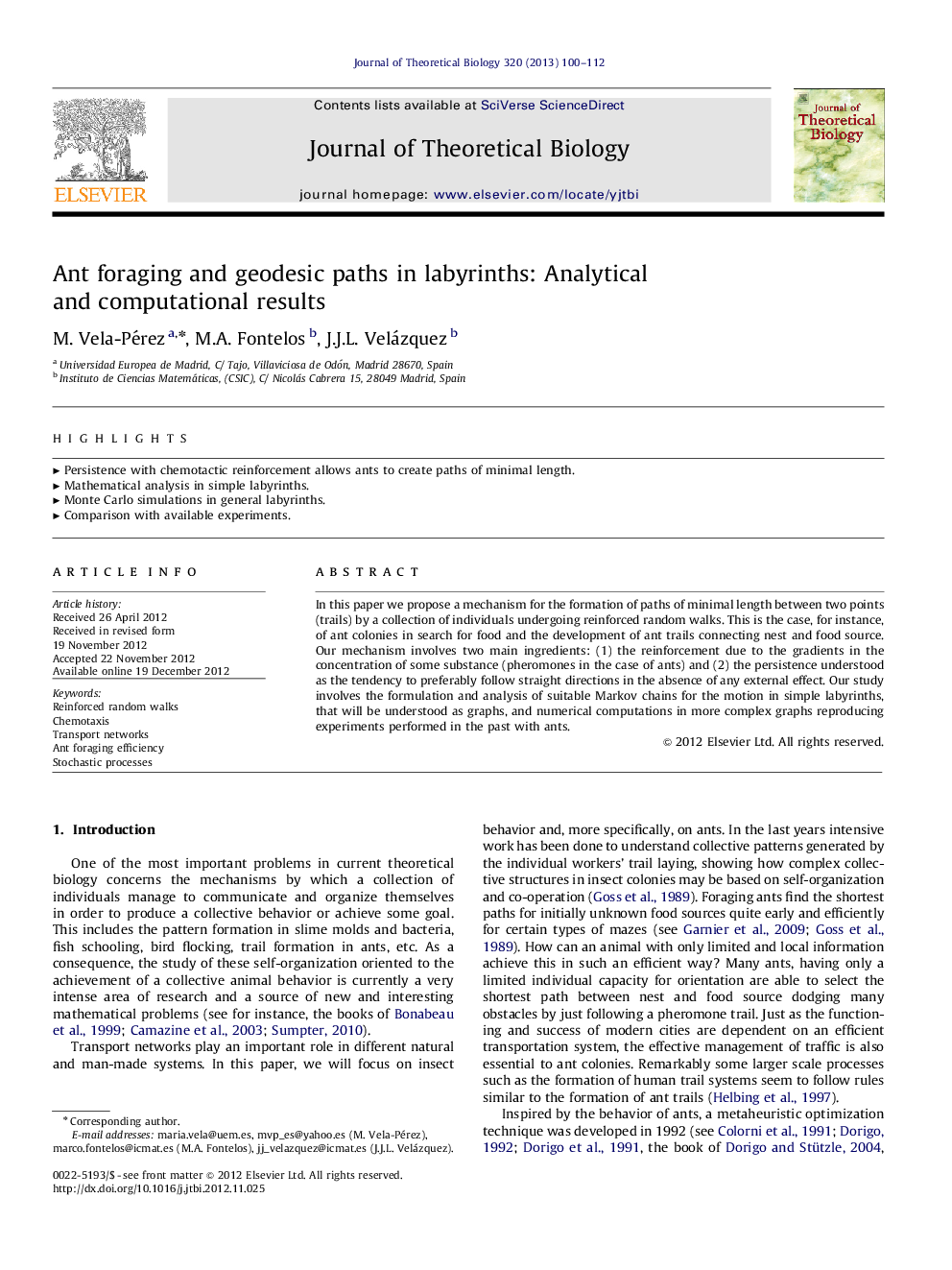| Article ID | Journal | Published Year | Pages | File Type |
|---|---|---|---|---|
| 4496472 | Journal of Theoretical Biology | 2013 | 13 Pages |
In this paper we propose a mechanism for the formation of paths of minimal length between two points (trails) by a collection of individuals undergoing reinforced random walks. This is the case, for instance, of ant colonies in search for food and the development of ant trails connecting nest and food source. Our mechanism involves two main ingredients: (1) the reinforcement due to the gradients in the concentration of some substance (pheromones in the case of ants) and (2) the persistence understood as the tendency to preferably follow straight directions in the absence of any external effect. Our study involves the formulation and analysis of suitable Markov chains for the motion in simple labyrinths, that will be understood as graphs, and numerical computations in more complex graphs reproducing experiments performed in the past with ants.
► Persistence with chemotactic reinforcement allows ants to create paths of minimal length. ► Mathematical analysis in simple labyrinths. ► Monte Carlo simulations in general labyrinths. ► Comparison with available experiments.
